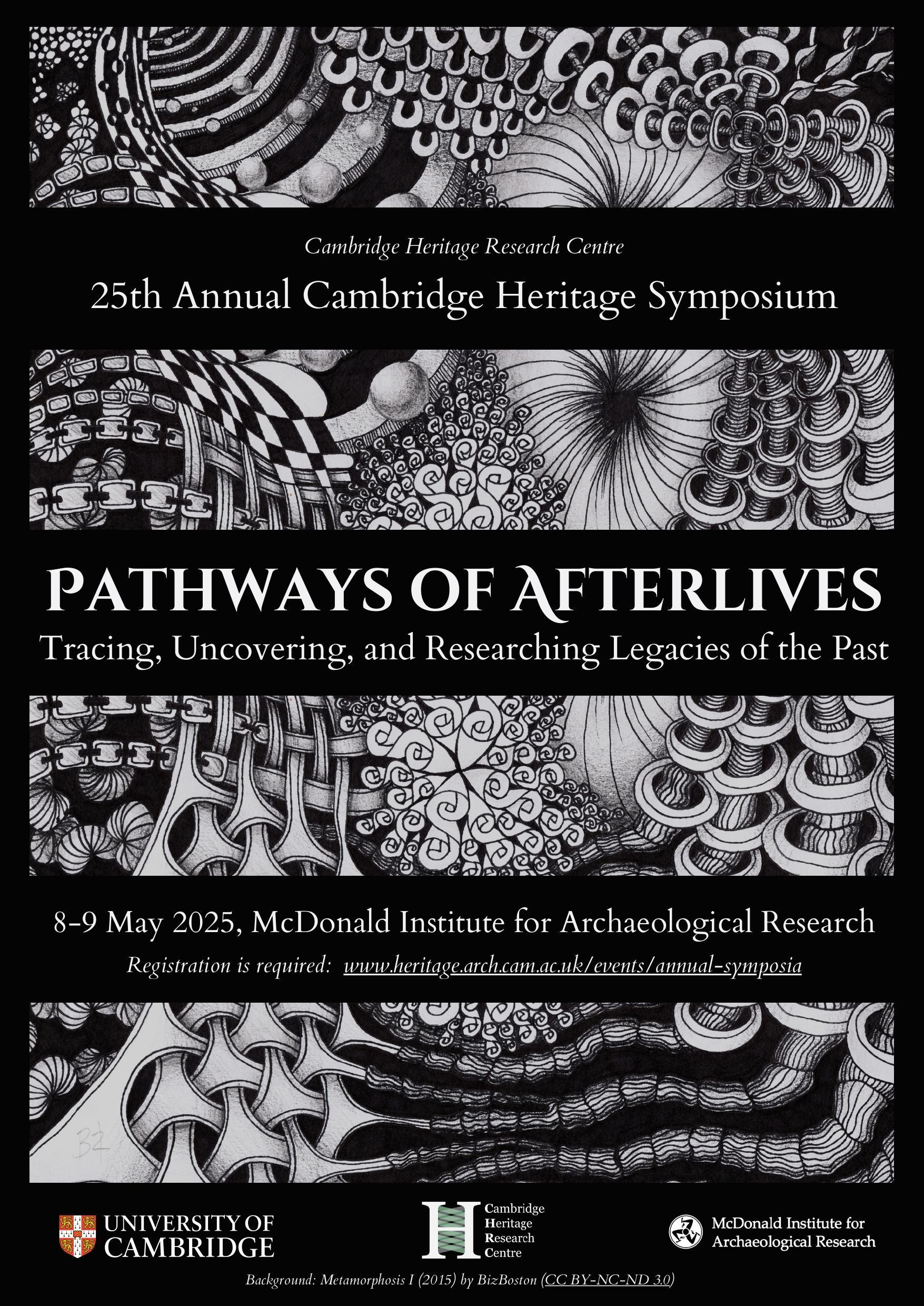
25th Annual Cambridge Heritage Symposium Pathways of Afterlives: Tracing, Uncovering, and Researching Legacies of the Past
8-9 May 2025, McDonald Institute for Archaeological Research
Abstract: That heritage involves an interplay between past, present and future is today undisputed in Heritage Studies. We know that past events have shaped the present we inhabit either despite ourselves or due to a deliberate choice or interpretation of a past against which to position ourselves. Yet, determining the continuous causal chains that link the past directly to the present and future has posed methodological challenges. As heritage scholars and practitioners navigate the intersections of memory, history, and identity, there is a growing recognition of the need for innovative and reflexive methodologies to understand and engage with legacies. Despite this, the methodological challenge of tracing, uncovering and researching legacies remains.
The 25th annual Heritage Research Symposium invites researchers and practitioners from diverse disciplinary backgrounds to meet this challenge by contributing to this ongoing discussion, considering how we study the legacies of the past. We seek to both showcase the interdisciplinary research on legacies taking place at the University of Cambridge and bring together cutting-edge work on this topic from around the world. The Symposium will create an opportunity to reflect on innovative approaches, challenge (if needed) existing ones, and exchange experiences on effective methods for researching the complex issues of legacy and heritage across time, space, and culture.
This year’s symposium is funded jointly by a grant from the University of Cambridge’s School of Humanities and Social Sciences (SHSS) for a project entitled Researching Legacies of the Past (PI, Dr Viejo-Rose). The project advances one of the themes of the SHSS’ Research Framework: Legacies of the Past or Historical Transitions by bringing together researchers working on legacies, broadly understood, from numerous disciplines.
